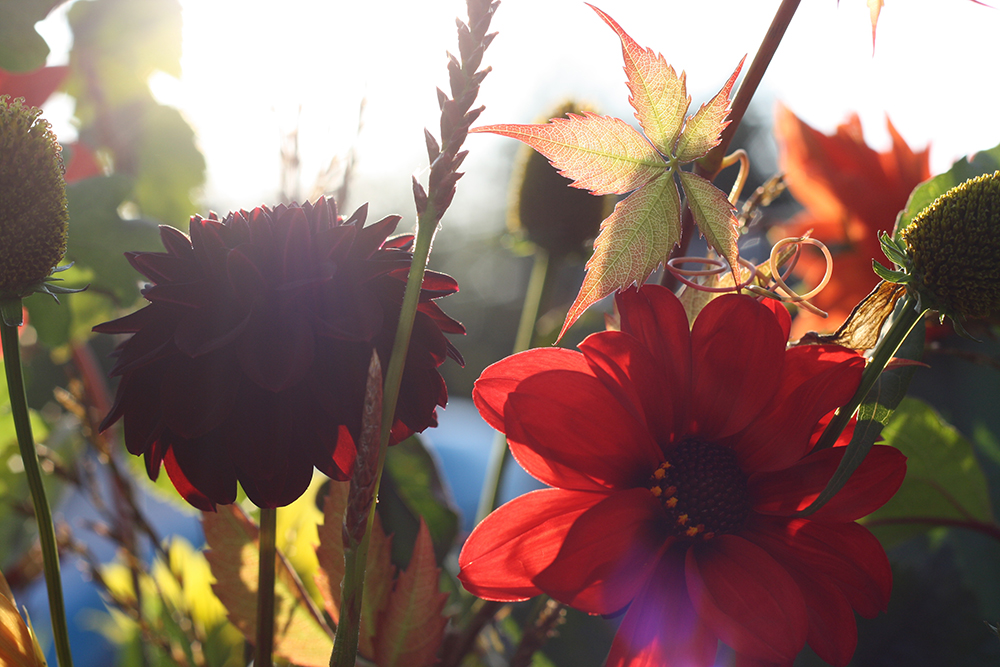Anna Taylor, owner of Anna’s Flower Farm in Audley End, shares what’s going on in the garden this month
By the time you read this, we may have had the first hard frost, which signals the final curtain for our beloved dahlias. They were kissed by Jack Frost and cooler night temperatures in early October, and the flowers showed the cold damage on their delicate petals. But until the first true ground frost, they and many other summer flowering plants flower harder and more prolifically after the autumn equinox, when night is longer than day.
Fresh dew every morning keeps the ground moist, so if it’s still reasonably mild or above freezing, it is the perfect opportunity to mulch your beds with compost. This is my number one top tip for a thriving garden. Soil health is key and applying a thick layer of organic material on a bed will always improve its condition. Try to do it even if you do nothing else in the garden this month.
Here in our gardens and plots, we create our own compost to mulch our beds. Essentially, we layer all our green nitrogen-rich weeds and flower cuttings with brown carbon materials like dried spent stems, chopped hedge clippings and the straw and paper bedding from our chickens in heaps made from recycled pallets.
Ideally, we would fill the heap with all the materials and wet the layers as we go in one session, to create ideal conditions for fast decomposition. Realistically, though, we fill the heap with materials as we generate them, which means the heap won’t achieve the high temperatures that result in quick compost if made in one go. We simply can’t produce enough for our many planting rows, so we will buy in mulch to supplement our own.
Fresh dew every morning keeps the ground moist
Madingley Mulch Field Compost is a great supplier and will advise as to the best mulch; it could be bark, manure, or a prepared mix for your soil, situation and growing requirements.
Alternatively, buy soil improver from the Council Recycling Centre made from our composted green waste.
Spread a thick layer of compost over wet soil, adding humus to improve soil structure, retain moisture and slowly release nutrients. Our production and quality of flowers and vegetables are noticeably reduced when we haven’t mulched deeply together, with more need to water and weed the following season.
And when the frost does hit the dahlias, we leave them for a few cold nights so all the foliage is blackened before lifting the tubers for storage. We need the space for next spring, and we rotate the crops to ensure good soil health. However, in your own garden, I would simply cut dahlias to the ground and cover with a bucket of compost.
This will protect them from water running down the open stems and rotting off the plants. They will emerge again late next spring and give another summer of flowers for you to cut for your home.

